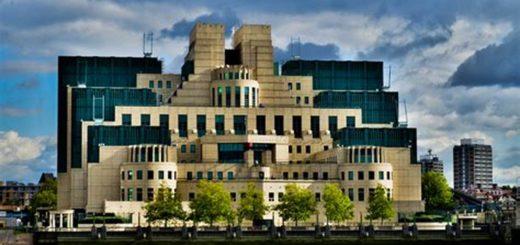The Federal Reserve Is the Source of Regional Banks’ Panic
The Federal Reserve Is the Source of Regional Banks’ Panic
March 12, 2023, 2022 (EIRNS)—The Federal Reserve Bank, by its headlong rush to jack up interest rates since the spring of 2022, with the dubious alibi that it is trying to control inflation, has placed regional and community banks in the United States, and some banks abroad, in danger of meeting the fate of the failed, $210 billion-asset Silicon Valley Bank in Santa Clara, California. Despite all the chattering of Wall Streeters and officials on Sunday about a “special fund” of the government to bail out SVB depositors and “prevent contagion to other banks,” dealing with the Federal Reserve and its economically destructive policy should be the priority.
All U.S.-based banks, of all sizes, hold U.S. Treasury securities in their capital, with the average of Treasuries, U.S. Agency bonds and state government bonds constituting around 25% of capital assets. That proportion grew during the dozen years after the 2008 crash, as Fed zero-interest rate policy created a kind of “guaranteed boom” in Treasuries with which to collateralize speculations.
The way to deal with this accumulating zero-interest dynamite was to nationalize the Fed—or to create a large National Bank for infrastructure and industry, and let banks trade their Treasury securities for equity in that bank, with long-term preferred stock with interest rates substantially higher than the Treasuries. Either way, Treasury interest rates would rise gradually toward more normal levels without creating big losses in banks’ and investment funds’ capital.
Instead, when the Fed reversed and executed large interest rate hikes starting last spring, banks across the board booked substantial capital losses, as these long-term and low-interest government bonds declined in value. (The Federal Reserve itself, loaded with Treasuries from massive QE money-printing operations, is no exception.) The losses were “unrealized” unless the bank had to sell them, taking “realized losses.”
SVB had the misfortune of having the highest ratio of Treasuries to its capital of any large bank in the country. This brought on a rapid run on the bank by a “tech” sector which is in deepening recession, as soon as SVB tried to sell some assets to restore its liquidity and took the losses. Because of the tech swoon, SVB had already lost about $25 billion in deposits since the end of 2022; then it lost $42 billion more in a day and a half March 9-10.
While SVB was an outlier in this, there are plenty of other banks the Fed has gored and wounded with its interest rate policy. The U.S. dollar got really “strong” for economic warfare against other nations; but the U.S. banking system, it has now become clear, was collateral damage.
Banking Troubles on the Horizon?
March 13, 2023
Banking Troubles on the Horizon?
Paul Craig Roberts
The failure of Silicon Valley Bank (16th largest bank in US) last Friday resulted from depositors withdrawing their funds in response to a drop in value of the bank’s bond portfolios caused by the Federal Reserve’s ill-considered hikes in interest rates. The mindless policy implemented by the Federal Reserve cures inflation by producing bank runs, failed banks, and unemployment. The Federal Reserve and neoliberal economists are still stuck in the worn out thinking of 20th century Keynesianism.
Yesterday federal regulators seized New York’s Signature Bank which was overwhelmed by deposit withdrawals. The banks’ failures, with troubles reported afflicting Republic Bank (14th largest in the US) and reports that many Wells Fargo depositors experienced zero balances due to a glitch of the digital revolution has left those fortunate enough to have bank balances an entire weekend to work themselves into a panic about the safety of their own bank deposits. The question is whether panicked depositors rush to withdraw their money today (Monday, March 13, 2023). Hoping to avoid this, the Federal Reserve announced yesterday on Sunday that it would provide banks with cash to meet withdrawals. The Federal reserve announced that all depositors in Silicon Valley and Signature banks, including those with deposits above the insured amount, would be protected. https://www.federalreserve.gov/newsevents/pressreleases/monetary20230312a.htm
With the Federal Reserve backstopping the banking system as it is supposed to do (and failed to do during the Great Depression), bank problems and the panic they produce will hopefully be contained. In the last 14 months, bank reserves have declined by $1.3 trillion. https://www.nasdaq.com/articles/analysis-declining-u.s.-bank-reserves-add-wrinkle-to-contentious-debt-ceiling-issue This means that banks are short the cash to meet withdrawals and would have to sell financial assets to meet withdrawals. These sales would depress the prices of the financial assets, and impair the banks’ balance sheets.
Of course, as during the previous financial crisis, government and financial executives will make reassuring statements, such as the one made by Treasury Secretary Yellen last Friday when she reassured the public that the American banking system is resilient and well capitalized.
But is it? The five banks labeled “too big to fail” have $188 trillion in derivatives. https://www.usbanklocations.com/bank-rank/derivatives.html The brutal fact is that 5 US banks have risk exposure that is twice the size of the GDP of the entire world. https://fred.stlouisfed.org/series/NYGDPMKTPCDWLD It is incomprehensible that 5 US banks have sufficient capital to back derivative bets that are twice the size of world GDP.
We owe the financial crisis earlier this century, and we will owe the next financial crisis, to the mindless repeal of the Glass-Steagall Act. This legislation was passed in 1933 to deal with the crisis at that time. The law did so by separating commercial from investment banking. This prevented commercial banks from using deposits for speculative purposes. The law prevented financial crisis for 66 years until it was repealed in 1999 during the Clinton administration. Alan Greenspan, the Federal Reserve Chairman at that time, argued that markets were self-regulating and did not need Washington’s help. This suited the big banks fine. You can learn about the consequences from Michael Lewis’ books. In short, a couple of Wall Street firms failed along with banks and insurance companies. The five largest banks were protected by Quantitative Easing, thus leading to explosive growth in the Federal Reserve’s balance sheet, inflated values of financial instruments, and the current possibility of another financial crisis.
Congress and economists would not admit their mistake in repealing the highly successful Glass-Steagall Act, but public resentment of big bank bailouts caused Congress to pretend to fix the situation. Congress “fixed” the problem it had created by legislating the ability of your bank to seize your deposits to prevent its failure. The law was deceptively called the Dodd-Frank Wall Street Reform and Consumer Protection Act of 2010. It claimed to “protect the American taxpayer by ending bailouts,” but did so by bailing out banks with the depositors’ money instead of federal tax revenues. It was said to be a “bail in” instead of a “bail out.” Ellen Brown explains it here: https://www.unz.com/article/what-will-happen-when-banks-go-bust-bank-runs-bail-ins-and-systemic-risk/
There was no valid reason for overturning Glass-Steagall. It happened because public policy has ceased to be in the public interest, instead serving private agendas. The commercial banks wanted to participate in the speculative ventures like investment banks and enjoy the same high earnings. Instead of using their own money, they wanted access to the money of their depositors. Free market ideologues serving their free market ideology provided the justification. But as we relearned a few short years afterward, markets are not self-regulating. Thus the consequent distortion of the economy by a decade of Quantitative Easing, the consequences of which are not over.
What can be done? Repeal Dodd-Frank Monday morning. It is the most foolish legislation since Prohibition. It protects the banks and the general taxpayer at the expense of depositors, thus encouraging runs on banks. It took a completely mindless Congress to pass such destructive legislation.
Also drive home the message that all deposits are protected. It is important to realize that among deposits too large to be insured are monies for payrolls of large businesses.
Then set to work with legislation requiring banks to restructure their investment bank operations and separate them in a different entity from deposit based banking with deposits insulated from investment banking.
The effect would be to re-establish Glass-Steagall.
It is possible that darker forces are at work. The five big banks, knowing that they are protected by the Fed, regard bank failures as opportunities to buy up assets for pennies on the dollar. The three New York banks, who control the New York Fed, the operating arm of the Federal Reserve, might even have their greedy eyes on Bank of America and Wells Fargo.
A Looming Derivativer Tsunami?
The existing trillions of dollars of derivative bets were made when interest rates were lower. When these contracts are reset, it will be at higher interest rates, so the value of the bets would be adversely affected. Ellen Brown explains what might be a Derivative Tsunami. https://scheerpost.com/2023/03/12/ellen-brown-the-looming-quadrillion-dollar-derivatives-tsunami/?utm_source=substack&utm_medium=email
One still reads in the financial media that banks finance businesses and new investment, but they don’t. Banks finance purchases of existing assets and speculative derivative bets that produce profits for investment banks but nothing real for the economy. Indeed, derivatives have become extreme risks with no productive purpose.
If the Federal Reserve has any intelligence, this signals the end of the rising interest rates. Inflation will have to be brought under control with supply-side, not demand-side policy.














